It is the season of rain, of corn and ube, of Ose Nsukka and green tatashe, of green rodo. It is the season of mud and wetness underfoot, of spicy broths and blankets, long naps on the couch, tall pots of tea, fiery stews chock full of salapore and yoyo – small, transparent fish; river crabs and fish.
Nigerian markets wouldn’t be markets if they didn’t have chili peppers, commonly called pepper in them. From fresh to dried, big and small, red, yellow, green – some are available all year round, ready to make taste buds tingle and dance.
The chili pepper (also chile, chile pepper, chilli pepper, or chilli[2]),…is the fruit of plants from the genus Capsicum which are members of the nightshade family, Solanaceae.[3] Chili peppers are widely used in many cuisines as a spice to add heat to dishes. The substances that give chili peppers their intensity when ingested or applied topically are capsaicin and related compounds known as capsaicinoids; Wikipedia
Wikipedia, Chili pepper
Though colour classifications can be applied in discussions about ripeness, it might be useful to look at the 5 main species which are cultivated and which vary in shape, size and heat.

On the colour spectrum of ripeness for peppers, green are the kickoff point, because chlorophyll. Like with oranges, as ripening progresses, chlorophyll decay happens.
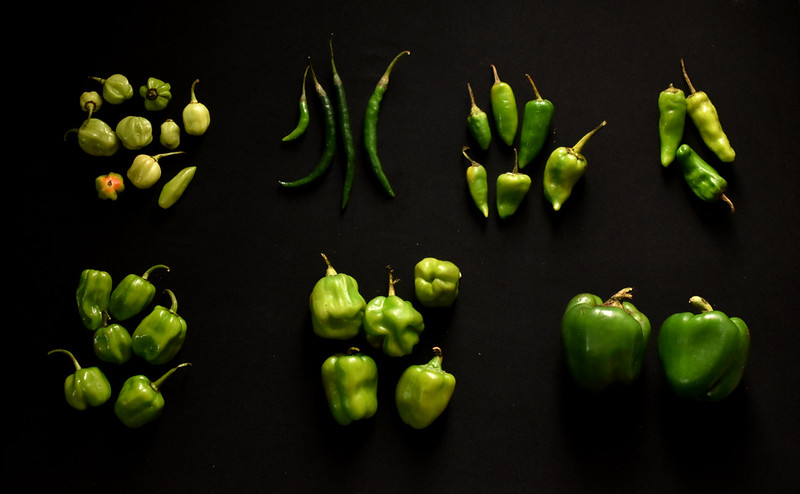
Generally green peppers ripen and can change in that process to a host of other colours including yellow, orange and red depending on the type. Sometimes, they change from green to yellow through to orange and red, sometimes they go from green to yellow, green to red, green to orange.

Now there are other pigments which are initially dormant/ suppressed by chlorophyll which are then activated during ripening.
For yellow peppers, violaxanthin, lutein and beta-carotene become dominant. Yellow (or orange) peppers are not necessarily intermediate peppers between green and red.

For the red peppers, still further on, the pigments are due to carotenoids and capsorubin.
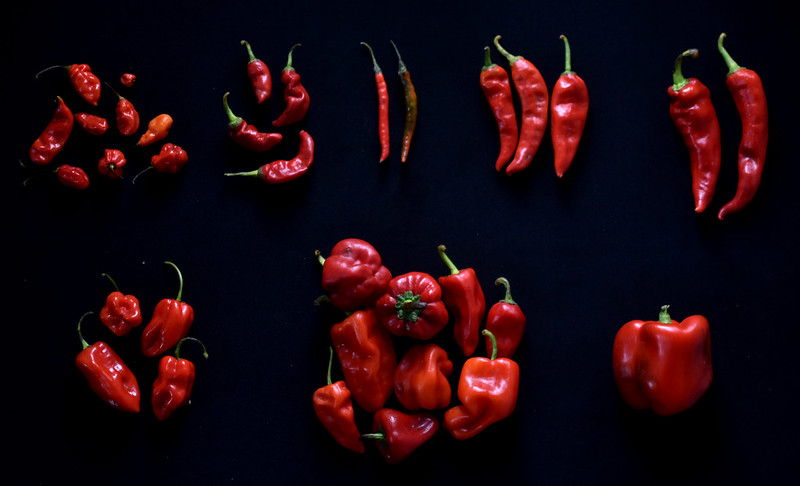
They are in the genus Capsicum, with the 3 in bold being the most common in Nigeria:
- C. annuum
- C. chinense
- C. frutescens
- C. baccatum (very common in Peru)
- C. pubescens (native to Bolivia and Peru, grows in cool climes/ cannot survive tropical temperatures)
Here’s a brief guide to the different kinds of peppers we have in Nigeria:
Scotch bonnets & Habaneros
Other names:
- Atarodo (Yoruba)
- Ose Oyibo (Igbo)
- Atarugu (Hausa)
Red
These are the most common peppers sold and used daily across Nigeria in food prep. It’s quite often the one that goes into a pot of stew, soup, sauce and everything in between.
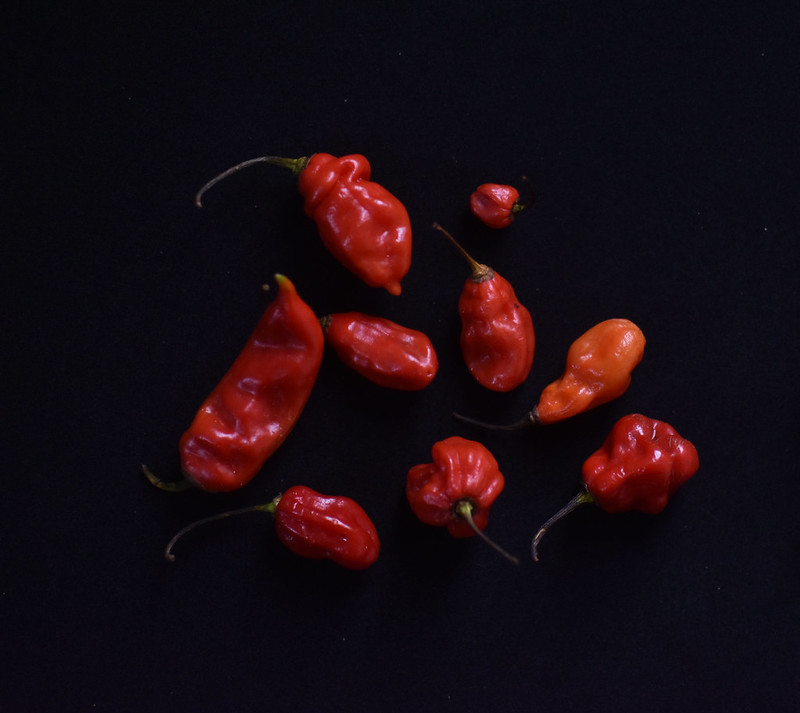
- Botanical info: specie C. chinense
- Uses: fresh. For general food preparation – stews, soups, rice dishes, beans etc
- Availability: all year round
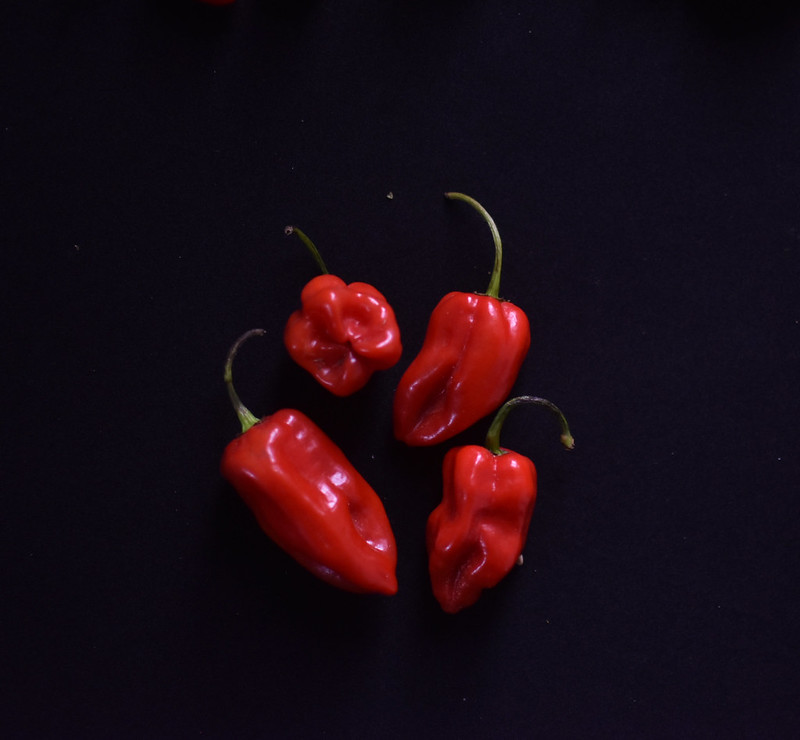
Green
In this bucket, there are many green peppers from the small pettie belle chilies which are the smallest habanero peppers, to the larger thin and thick skinned ones.
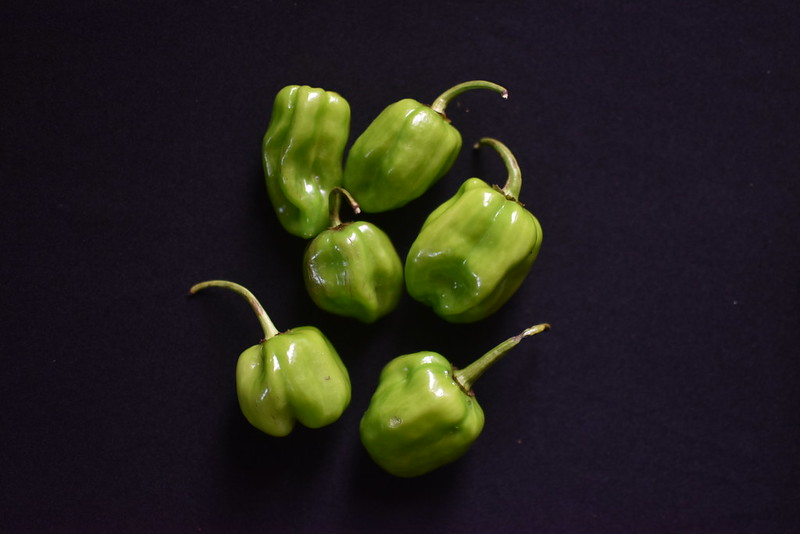
In Nigeria, they are prized for use in ‘Designer’ stew or Ayamashe. This is a green stew made from a range of green peppers – scotch bonnets, habaneros, tatashe, pettie belle or bell peppers cooked down with onions, fermented seeds and other seasoning. The meats – a variety of beef, offal and sometimes dried fish lend the name designer stew to this aromatic dish.
- Botanical info: specie C. chinense
- Uses: fresh. special food preparation – ofada sauce, designer stew, ayamashe: In Ghana, the small ones – pettie belle are the base of kpakpo shito, a green sauce
- Availability: seen in Lagos in July, November
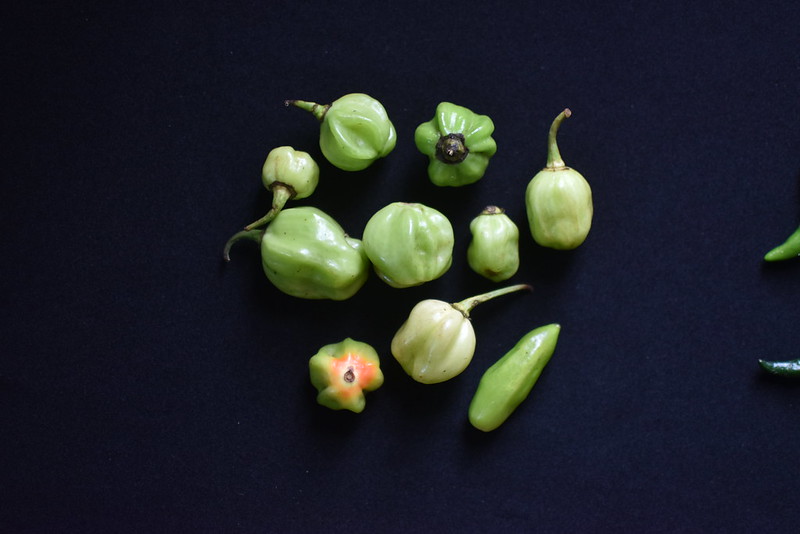
Yellow
also known as Ose Nsukka or Cameroun (A neighbouring country where they are also very popular) peppers . These are incredibly aromatic with a hot and ‘sweet’ flavour, and prized in Nigeria.
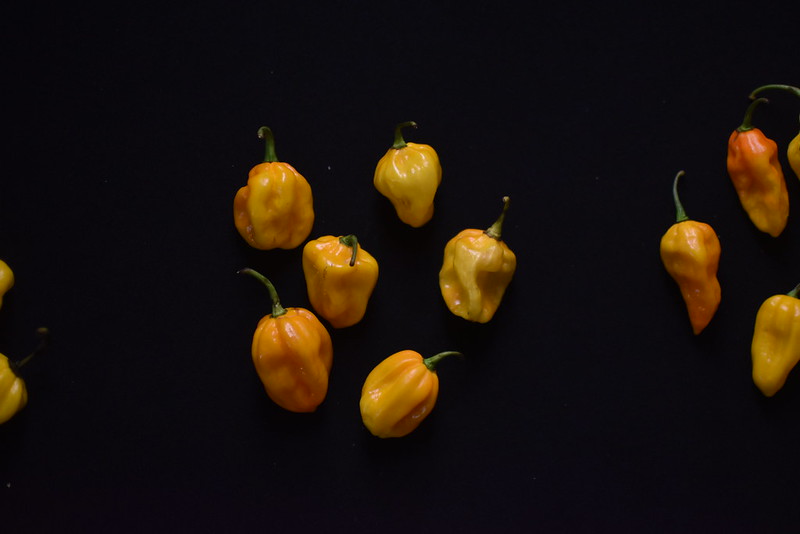
- Botanical info: specie C. chinense
- Uses: fresh & dried. For general food preparation. Great in okro soup, in (seafood) stews
- Availability: Seasonal as well, commonly found in the rainy season from April through June to September with a reduced appearance in August which often sees the rain take a break.
Bell Peppers
These are the largest and mildest peppers that feature in Nigerian cuisine
- Botanical info: specie C. annuum
- Uses: fresh. For general food preparation – rice, salads, stews and sauces
- Availability: all year round
Green
These are the major generals that define Nigerian fried rice, and salads. decades, it was the the only bell pepper available in Nigeria.
It is also used in making ofada sauce as the main pepper or in combination with green tatashe.

Red
These have become popular and available in the last few years. Prior to that, they were imported.
They are often used in rice dishes, salads, sometimes replacing red tatashe in stews and sauces.
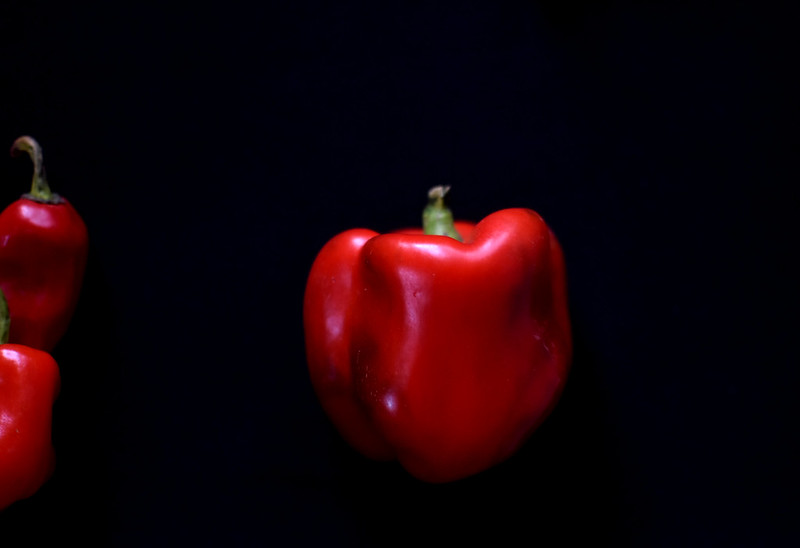
Yellow
These have recently become available. They are used in rice dishes, salads and the like.

Tatashe
Red
Similar to paprika peppers but hot and related to bell peppers. Their shapes range from bell pepper like, to more elongate, poblano peppers. They do have capsaicin and a lot of colour in their skin

- Botanical info: specie C. annuum
- Uses: fresh & dried. For general food preparation – stews, soups, rice dishes, beans etc
- Availability: all year round, though in June/ July, there is some scarcity which results in smaller fruit.
Green

- Botanical info: specie C. annuum
- Uses: fresh. Ofada/ Ayamashe/ Designer stew
- Availability: Limited. I saw this in July. As you can imagine, they ripen and turn red, which is more common and thus makes its way to the moarket more often
Cayenne Pepper
Other name:
Sombo (Yoruba)
- Botanical info: specie Capsicum annuum var. fasciculatum
- Uses: fresh & dried. For general food preparation – stews, soups, rice dishes, beans etc
- Availability: all year round
Red
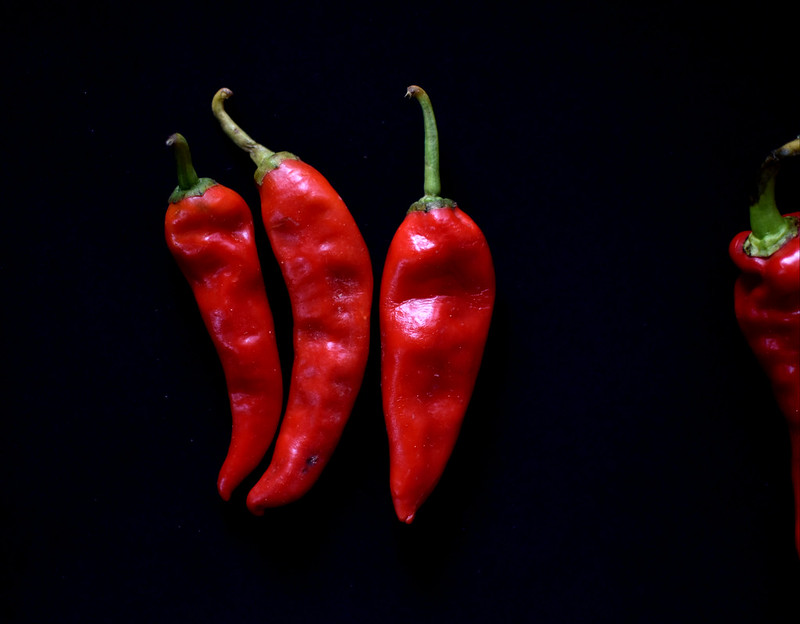
Green


Bird’s Eye Chili
Other names:
Atawere (Yoruba)
- Botanical info: specie C. frutescens
- Uses: fresh & dried. For general food preparation – stews, soups, rice dishes, beans etc
- Availability: all year round
Red
Used fresh and dried.

Green
Used in general food prep, ofada sauce, etc
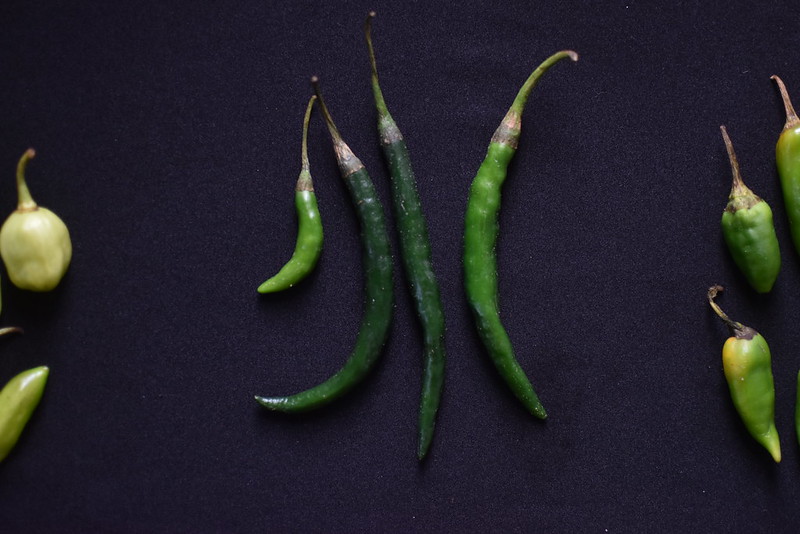
In summary, these are the common fresh peppers and chilies used in Nigeria. Some of them are dried. Check out my next post where I share them.
References:
Compound Interest, The Chemistry of Bell Peppers – Colour and Aroma

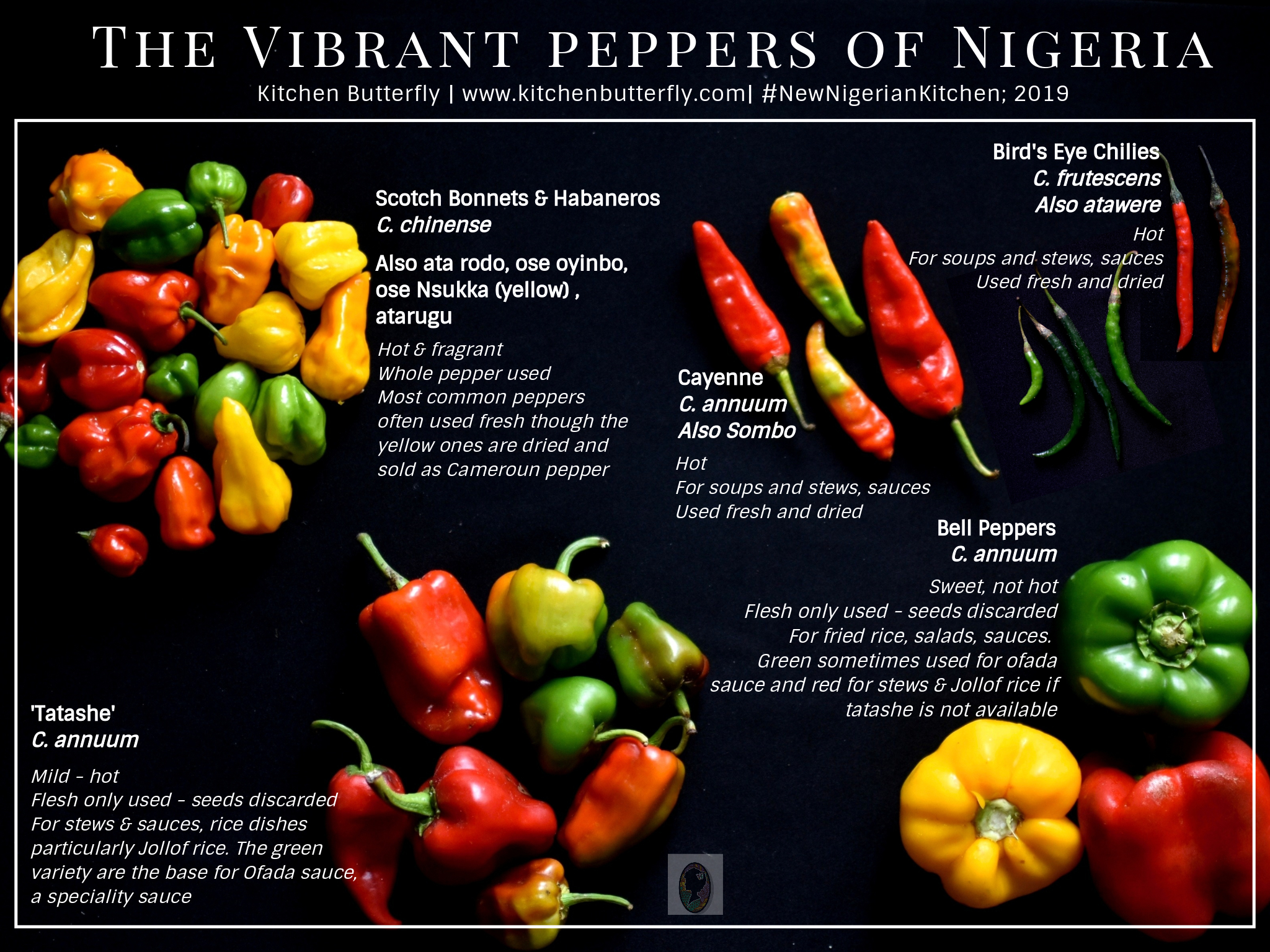
Leave a Reply